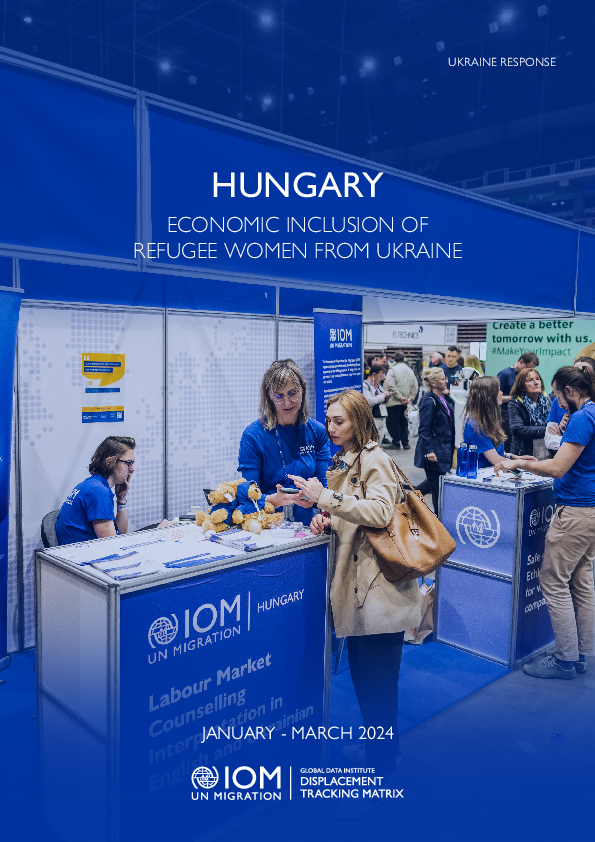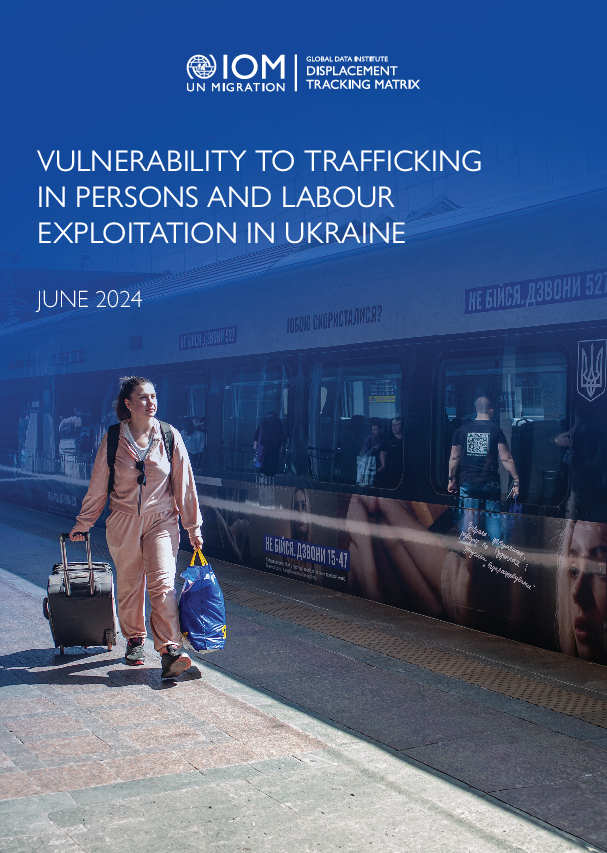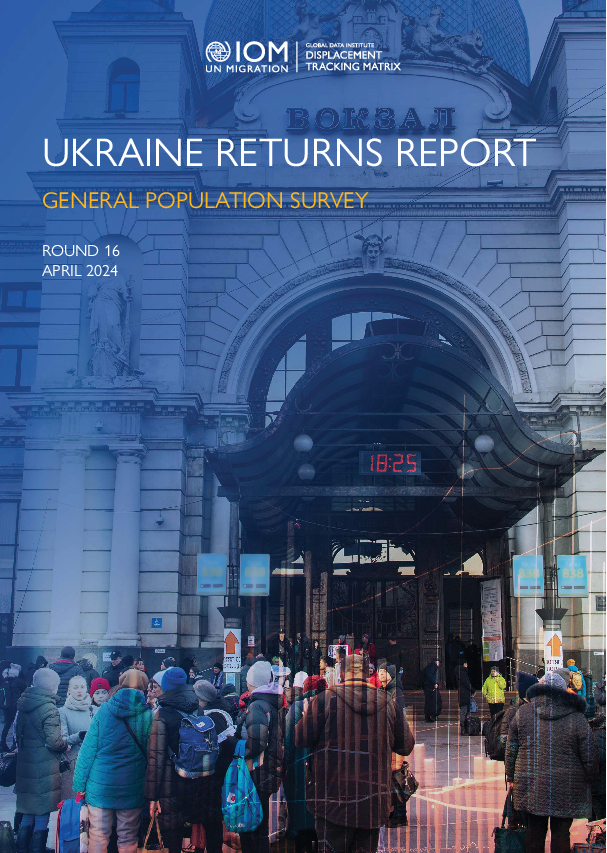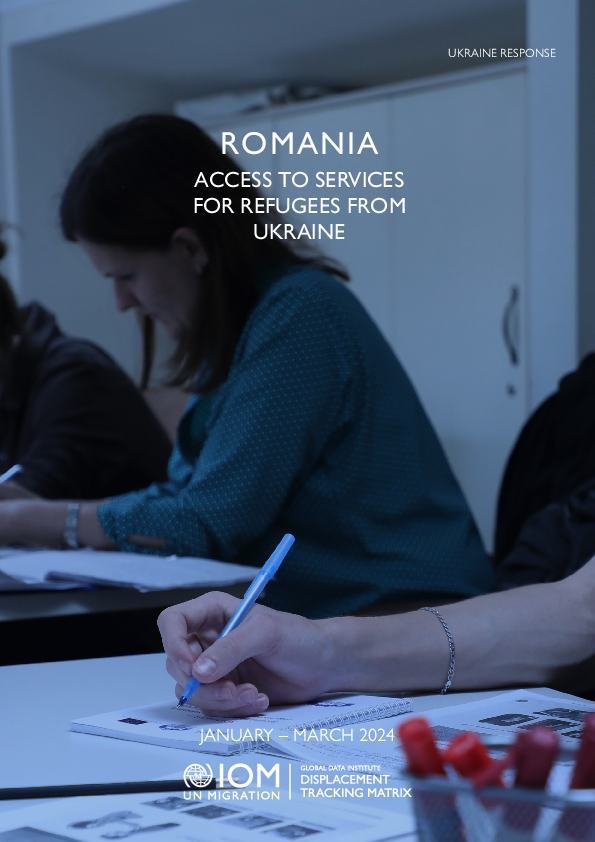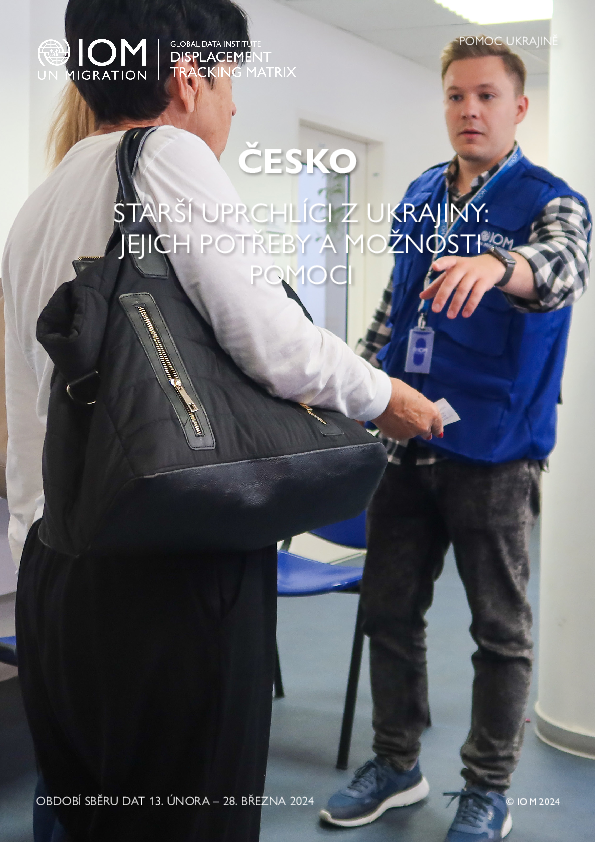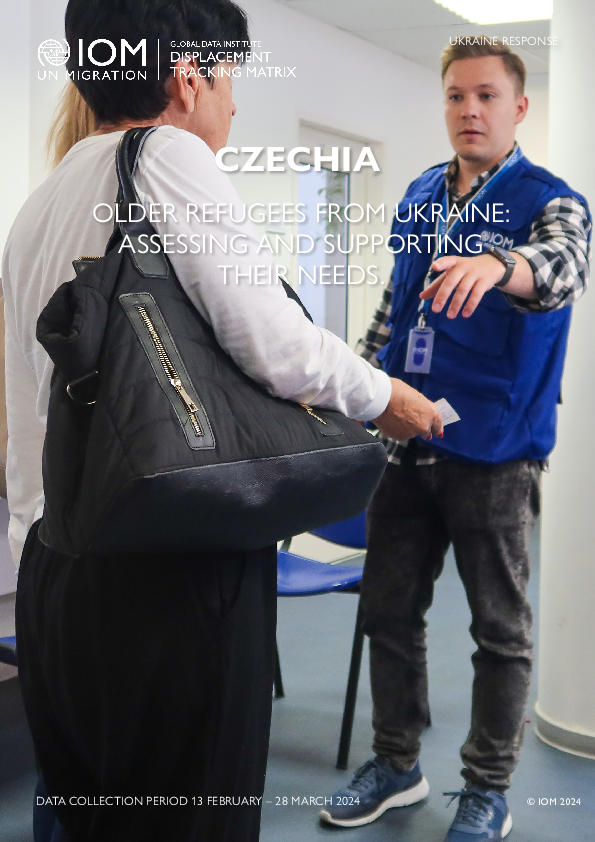-
Countries
-
Data and Analysis
-
Special Focus
-
Crisis Responses
Ukraine Response
Error message
The submitted value field_published_date_value in the Sort by element is not allowed.
Feb 07 2023
Print
Since the start of the war in Ukraine in February 2022, IOM has worked to provide direct assistance to affected populations but has also provided a better understanding of these individuals’ situations, aiming at improving and consolidating the crisis response efforts undertaken by IOM, governments, and the international community.
IOM’s Displacement Tracking Matrix (DTM) programme seeks to understand where affected people are, their most urgent needs, and their intentions for the coming period. IOM has conducted surveys across Ukraine and the region, providing crucial insights to inform evidence-based humanitarian actions and policy.
Inside Ukraine, IOM has implemented consecutive rounds of representative general population survey since March 2022, tracking internal displacement and mobility flows. This survey gathers insights into the situation and needs of vulnerable population groups across thematic areas, applying intersectoral approach to collect information. IOM has also built a field presence and a network of key informants across 20 regions of Ukraine and the capital city, monitoring the recorded presence of IDPs at municipality level through regular baseline assessments.
Furthermore, IOM has conducted a number of studies in neighbouring to Ukraine countries: Belarus, Republic of Moldova, Romania, Hungary, Poland, and Slovakia to survey the needs and intentions of those fleeing from the war and those crossing back to Ukraine. In addition to this, IOM has enlarged the scope of the DTM tool to assess the situation concerning Ukrainian refugees and Third-Country Nationals (TCNs) that continued their onwards journey and reached further destinations in Europe: Czechia, the Baltics, Western Balkans as well as Belgium, Germany, and France.
Through IOM’s assessments, governments and the humanitarian community are able to quickly identify the needs, movements, and intentions of affected persons and to further consolidate humanitarian interventions in support of the internally displaced populations in Ukraine, and the Ukrainian refugees and TCNs fleeing from war to other countries in Europe
Countries in this response
- Active DTM operation
- Past DTM operation
Check out the interactive dashboard
Ukraine Regional Response: Needs, Intentions, and Border Crossings
Check out the interactive dashboard
Registered IDP Area Baseline Assessment Dashboard (ABA)
Hungary — Economic Inclusion of Refugee Women from Ukraine (January - March 2024)
Hungary — Economic Inclusion of Refugee Women from Ukraine (January - March 2024) delves into the employment profiles and prospects of 137 refugee women from Ukraine who are of working age (18-64 years old).
Lithuania — Access to Healthcare Services for Refugees from Ukraine (January - March 2024)
The IOM’s Displacement Tracking Matrix collected data through Surveys with refugees in the Ukraine Response region from January to March 2024, conducting interviews with a total of 485 individuals in Lithuania.
Lithuania — Social Integration of Refugees from Ukraine (January - March 2024)
The IOM’s Displacement Tracking Matrix collected data through Surveys with Refugees in the Ukraine Response region from January to March 2024. In Lithuania, a total of 485 surveys were collected.
Lithuania — Labour Market Integration of Refugees from Ukraine (January - March 2024)
The IOM’s Displacement Tracking Matrix collected data through Surveys with Refugees in the Ukraine Response region from January to March 2024. In Lithuania, a total of 485 surveys were collected.
Polska — Migranci a Policja Polska: Badanie percepcji, wyzwań i sposobów wzmocnienia relacji (grudzień 2023 - kwiecień 2024)
Niniejsze badanie ma na celu zapewnienie wglądu w interakcje, postrzeganie i potencjalne obszary poprawy w relacjach między migrantami spoza Ukrainy w Polsce a polskimi organami porządku publicznego, ze szczególnym uwzględnieniem Polskiej Policji.
Estonia — Access to Healthcare Services for Refugees from Ukraine (January - March 2024)
The IOM’s Displacement Tracking Matrix collected data through Surveys with refugees in the Ukraine Response region from January to March 2024. In Estonia, a total of 958 surveys were collected.
Україна — Звіт про внутрішнє переміщення населення в Україні — Опитування загального населення — Раунд 16 (10 березня–11 квітня 2024)
Представництво МОМ в Україні представляє Звіт про внутрішнє переміщення населення в Україні (квітень 2024 року).
Ukraine — Vulnerability to Trafficking in Persons and Labour Exploitation in Ukraine (June 2024)
The full-scale invasion of Ukraine by the Russian Federation in February 2022 has triggered mass displacement and a humanitarian crisis, heightening the population’s vulnerability to protection risks, including trafficking in persons, particularly among displaced and conflict-af
Ukraine — Returns Report — General Population Survey Round 16 (April 2024)
Between 10 March and 11 April 2024, the International Organization for Migration (IOM) conducted Round 16 of the General Population Survey (GPS), a highly representative assessment of internal displacement in Ukraine.
Romania — Access to Services for Refugees from Ukraine (January - March 2024)
IOM’s Displacement Tracking Matrix (DTM) collected data on the needs, intentions, and integration challenges of refugees as part of the Surveys with Refugees in the Ukraine Response Region exercise.
Česko — Starší Uprchlíci z Ukrajiny: Jejich potřeby a možnosti pomoci (Února – Března 2024)
K 1. dubnu 2024 bylo v Česku podle vnitrostátních orgánů registrováno 338 736 uprchlíků z Ukrajiny, kteří žádali o dočasnou ochranu. Tato zpráva vychází ze smíšeného výzkumu se staršími uprchlíky, skupinou, která byla v předchozích výzkumech, označena za jednu z nejzranitelnějších.
Czechia — Older Refugees from Ukraine: Assessing and supporting their needs (February - March 2024)
This report is based on a mixed method study conducted among older refugees, a group that has been identified by previous research, including that of IOM, as being among the most vulnerable.
Pagination
Ukraine — Conditions of Return Assessment Dataset — Round 3 (May-Jun 2023)
Oct 20 2023
<p>In round 3, out of the 156 return locations assessed, 25 recorded high severity conditions for one or more driver of severity. This equates to nearly a third of the estimated returnee population in assessed locations residing in high severity conditions (31%, 432,000 people).</p>
Ukraine — Conditions of Return Assessment Dataset — Round 2 (Mar-Apr 2023)
Oct 20 2023
<p>In round 2, out of the 117 return locations assessed, 23 recorded high severity conditions for one or more driver of severity. This equates to nearly a third of the estimated returnee population in assessed settlements residing in high severity conditions (29%, 499,000 people).</p>
Ukraine — Conditions of Return Assessment Dataset — Round 4 (Jul-Aug 2023)
Oct 20 2023
<p>In round 4 assessment, nearly a third of the estimated returnee population reside in locations which recorded high severity for one or more drivers of severity. This equates to approximately 680,000 people residing in high severity conditions in 57 locations, amidst 186 return locations…
Ukraine — Area Baseline Assessment (Raion level) — Round 27
Sep 15 2023
A baseline assessment is a sub-component of mobility tracking. It aims to collect data on IDP, migrant or returnee population presence in a defined administrative area of the country.
Ukraine — Area Baseline Assessment (Hromada level) — Round 27
Sep 15 2023
A baseline assessment is a sub-component of mobility tracking. It aims to collect data on IDP, migrant or returnee population presence in a defined administrative area of the country.
Ukraine — Area Baseline Assessment (Raion level) — Round 26
Aug 15 2023
The data collected for the Area Baseline Assessment Round 26 reflects the up-to-date local administrative register of the IDP population as of 31 July 2023, equivalent to a total of 3,677,601 registered IDPs. Among oblasts, Kharkivska (510,775), Dnipropetrovska (388,845) and Kyivska (334,148) have…
Ukraine — Area Baseline Assessment (Hromada level) — Round 25
Jul 14 2023
A baseline assessment is a sub-component of mobility tracking. It aims to collect data on IDP, migrant or returnee population presence in a defined administrative area of the country.
Ukraine — Area Baseline Assessment (Raion level) — Round 25
Jul 14 2023
A baseline assessment is a sub-component of mobility tracking. It aims to collect data on IDP, migrant or returnee population presence in a defined administrative area of the country.
Ukraine — Area Baseline Assessment (Raion level) — Round 24
Jun 19 2023
A baseline assessment is a sub-component of mobility tracking. It aims to collect data on IDP, migrant or returnee population presence in a defined administrative area of the country.
Ukraine — Area Baseline Assessment (Hromada level) — Round 24
Jun 19 2023
A baseline assessment is a sub-component of mobility tracking. It aims to collect data on IDP, migrant or returnee population presence in a defined administrative area of the country.
Ukraine — Area Baseline Assessment (Hromada level) — Round 23
May 11 2023
A baseline assessment is a sub-component of mobility tracking. It aims to collect data on IDP, migrant or returnee population presence in a defined administrative area of the country.
Ukraine — Area Baseline Assessment (Raion Level) — Round 23
May 11 2023
A baseline assessment is a sub-component of mobility tracking. It aims to collect data on IDP, migrant or returnee population presence in a defined administrative area of the country.
Ukraine — Area Baseline Assessment (Raion level) — Round 22
Apr 24 2023
A baseline assessment is a sub-component of mobility tracking. It aims to collect data on IDP, migrant or returnee population presence in a defined administrative area of the country.
Ukraine — Area Baseline Assessment (Hromada level) — Round 22
Apr 20 2023
A baseline assessment is a sub-component of mobility tracking. It aims to collect data on IDP, migrant or returnee population presence in a defined administrative area of the country.
Ukraine — Area Baseline Assessment (Raion level) — Round 21
Mar 21 2023
A baseline assessment is a sub-component of mobility tracking. It aims to collect data on IDP, migrant or returnee population presence in a defined administrative area of the country.
Ukraine — Conditions of Return Assessment Dataset — Round 1 (Jan-Feb 2023)
Mar 09 2023
<p>In round 1, out of the 65 return locations assessed, 12 recorded high severity conditions for one or more driver. This equates to around 15 per cent of the estimated returnee population in assessed settlements residing in high severity conditions (equivalent to 83,000 people).</p>
Ukraine — Area Baseline Assessment (Hromada level) — Round 20
Feb 06 2023
<p>A baseline assessment is a sub-component of mobility tracking. It aims to collect data on IDP, migrant or returnee population presence in a defined administrative area of the country.</p>
Ukraine — Area Baseline Assessment (Raion level) — Round 20
Feb 06 2023
<p>A baseline assessment is a sub-component of mobility tracking. It aims to collect data on IDP, migrant or returnee population presence in a defined administrative area of the country.</p>
Ukraine — Area Baseline Assessment (Hromada level) — Round 19
Jan 17 2023
A baseline assessment is a sub-component of mobility tracking. It aims to collect data on IDP, migrant or returnee population presence in a defined administrative area of the country.


